As well as my work on pyroclastic modelling, my first postdoc was spent investigating submarine turbidity currents. It’s fair to say most of the general population have never heard of the things, which might be considered bizarre considering the fact that a single one of these flows can transport more sediment than the all the worlds rivers put together manage in a year. To put that into numbers, rivers are estimated to throw out something like 13-15 billion tons. That equates to around 5 x 10^12 L, or 5 cubic km of sediment. For scale, that’s about 5 times the amount of material that Mt St Helens threw out in 1980. However, even a small turbidity current will deposit volumes of 10 cubic kilometers. 100 cubic kilometers is relatively common. There are big ones which have been known to move as much as 3,500 cubic km. (Sidenote, the deposit of a submarine turbidity current is called a turbidite).
How do we know this? Geology. And interestingly, almost only geology. We can observe the deposits of these flows, but no-one has ever seen one in action. We have not a single measurement from within one of these deep-basin flows. We have some measurements of small scale flows occurring in shallow water which we believe behave in a similar way to the deep basin stuff, but even these experiments have never measured the concentration in the important dense part of the flow. Our only other line of evidence is one which raises the importance of understanding these things; in 1929 an Earthquake triggered a turbidity current on the Grand Banks. That current severed a dozen subsea communications cables, but we can at least use those data to estimate speeds of that current. Turbidity currents have caused plenty of other subsea damage in more recent history as well. With almost all of our international communications traffic delivered by subsea infrastructure, these things have huge potential for damage.
Some months ago I was invited to attend a workshop being held in Italy to address where turbidity current research is, and what future work might focus on. This was being organised by Pete Talling at the National Oceanography Centre in Southampton, who recently put out an excellent review article on the subject. I of course accepted, and a fortnight ago found myself in Bologna trying to look for a ‘brown haired Italian man’ who was going to pick me up.
The workshop was excellent, with 32 attendees from across the world and specialisms. We spent about half the time in discussions, and the other half in the field (still having discussions). I won’t go into too much detail on the work presented as I know a lot of it is still heading for publication, but suffice to say we had a fantastic mixture of modellers, sedimentologists, industry guys (turbidites can form major petroleum reservoirs), and experimentalists. It’s the first workshop I’ve been able to attend, and it blew the socks off every conference I’ve ever been to for enabling dialogue between people, and it was useful dialogue.
There were some awesome presentations from the guys at MBARI and the Canadian Geological Survey looking at flow observations around Monterey Bay, the Fraser Delta and the Black Sea. Some really interesting modelling from Andy Hogg at Bristol demonstrating how important modelling a variety of grainsizes is in getting deposits correct. There were also plenty of presentations on how we model and observe complex 3D architectures from a variety of perspectives.
The fieldwork was focussed on looking at a turbidite sequence in the Apennines, which formed as a pretty much perfect layer-cake of horizontal beds. Did I mention that turbidity currents have no problem propagating for hundreds of kilometres along slopes shallower than that on a football field?
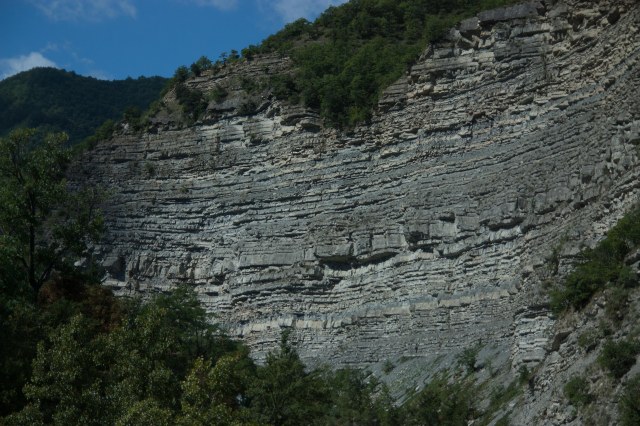 So what you see in the field are alternating layers of sand (the turbidite) and mud (some of it settling out after the sand deposits, some of it then settling out of the water column as normal hemipelagic mud over the hundreds or thousands of years between flows). Interestingly, you can tell the difference between the turbidite mud and the hemipelagic mud from the colour contrast; The mud deposited by the turbidite is a slightly bluer colour than the paler hemipelagic mud. This photo shows a layer of turbidite mud at the bottom, then a pale hemipelagic mud above that, finally capped by the next turbidite sand, with mud again on top of that.
So what you see in the field are alternating layers of sand (the turbidite) and mud (some of it settling out after the sand deposits, some of it then settling out of the water column as normal hemipelagic mud over the hundreds or thousands of years between flows). Interestingly, you can tell the difference between the turbidite mud and the hemipelagic mud from the colour contrast; The mud deposited by the turbidite is a slightly bluer colour than the paler hemipelagic mud. This photo shows a layer of turbidite mud at the bottom, then a pale hemipelagic mud above that, finally capped by the next turbidite sand, with mud again on top of that.
The really nice thing about turbidite sequences is that while you get the really clear differential weathering between the hard sand and the softer mud highlighting the broad structure, there is so much amazing fine structure to observe as well. Take, for example, mm-scale horizontal laminations:
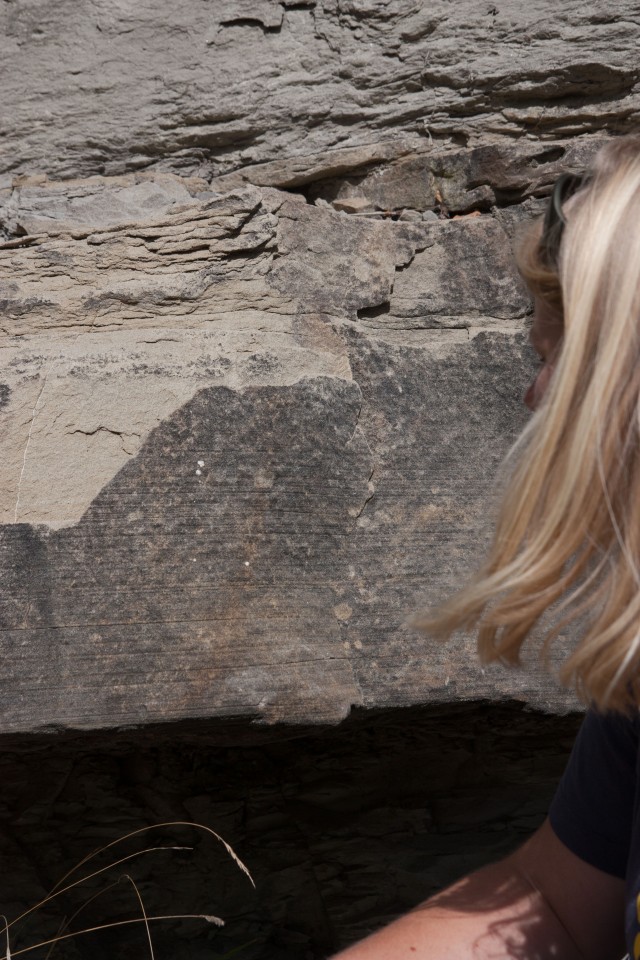 And convoluted bedding formed by remobilisation of wet sediment
And convoluted bedding formed by remobilisation of wet sediment
And my personal favourite, dewatering features. Favourite because they are really difficult to see unless the sun is just right.
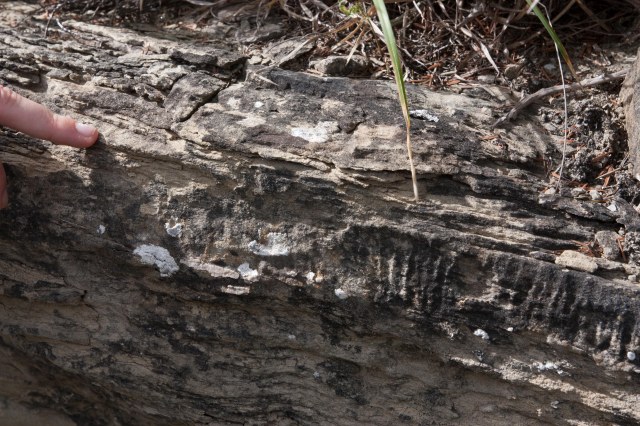 Those dewatering features also seem to be associated with really subtle surface ridges. I got into a very interesting and ultimately inconclusive debate with Esther Sumner and Frank Peel about how you could form these uniform ridges (which appear to be strongly correlated with the original flow direction).
Those dewatering features also seem to be associated with really subtle surface ridges. I got into a very interesting and ultimately inconclusive debate with Esther Sumner and Frank Peel about how you could form these uniform ridges (which appear to be strongly correlated with the original flow direction).
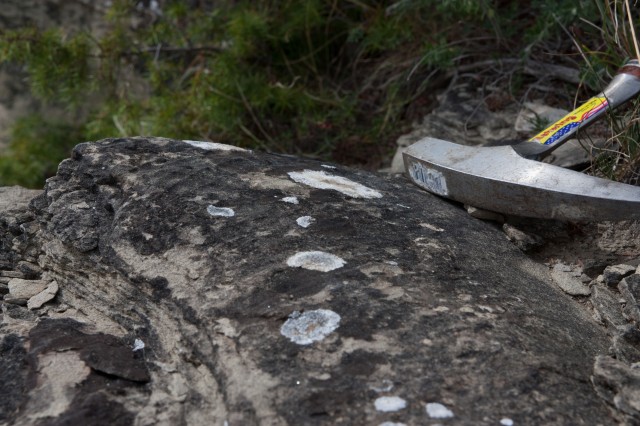 One of the best discoveries of the week, however, was a little something Mike Clare from Fugro introduced me to. Geological community – may I introduce 123D Catch. In summary, take a few dozen photos at different angles around an object, and this free bit of software automatically works out where each is in relation to the other and builds a 3D model, which it then textures and allows you to manipulate as a 3D object.
One of the best discoveries of the week, however, was a little something Mike Clare from Fugro introduced me to. Geological community – may I introduce 123D Catch. In summary, take a few dozen photos at different angles around an object, and this free bit of software automatically works out where each is in relation to the other and builds a 3D model, which it then textures and allows you to manipulate as a 3D object.
I’m still very new to it, and the two samples I tried in Italy have not come out brilliantly. however, I present to you the dewatering features in glorious 3D:
A little shonky with a few model gaps because I didn’t take enough pictures. There’s another one of convolutions that I’ll upload for another post, probably describing the app in a bit more detail.
Get to it geofiends – I think this has some real potential.

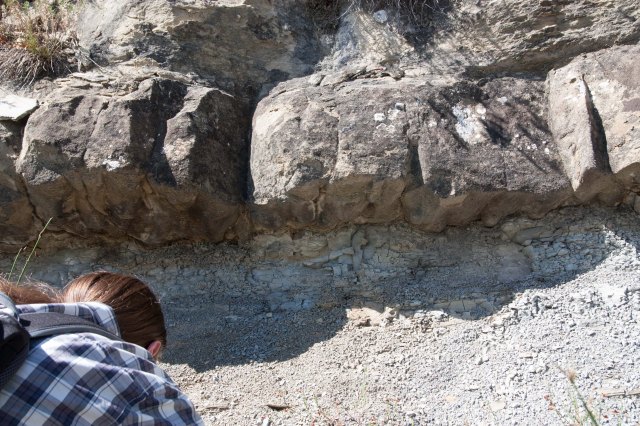
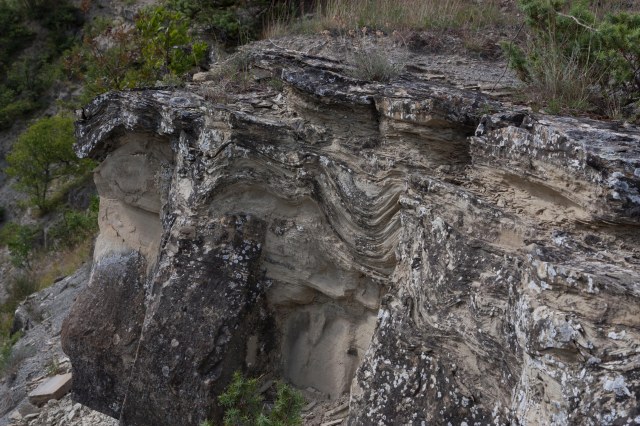



You must be logged in to post a comment.